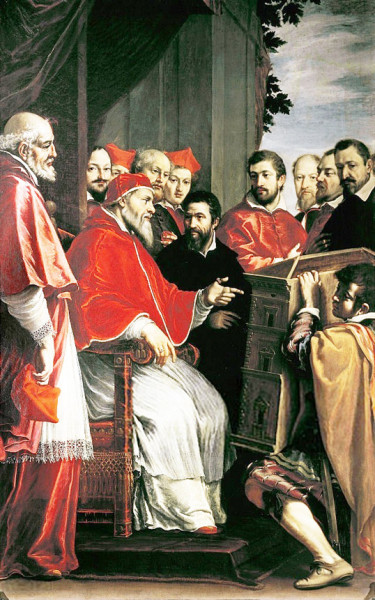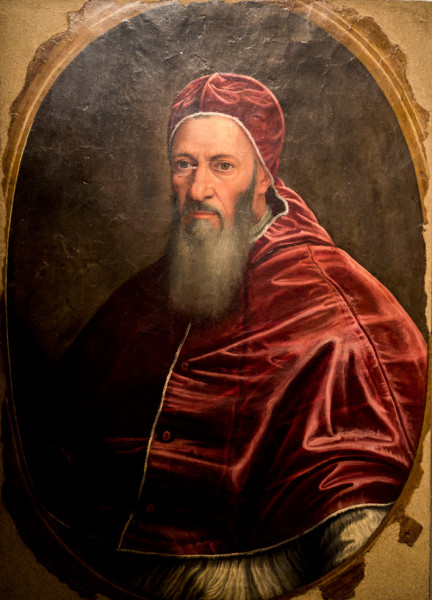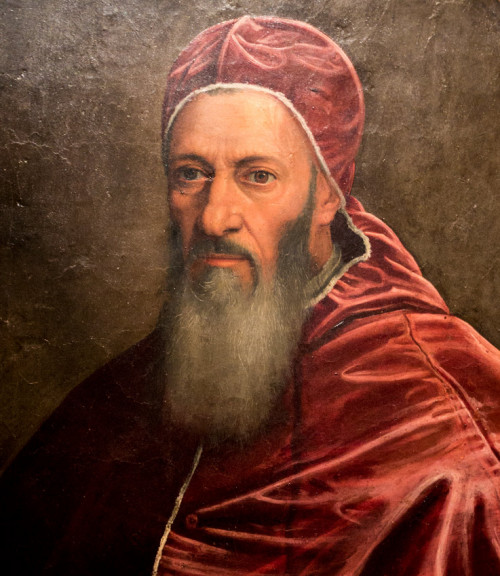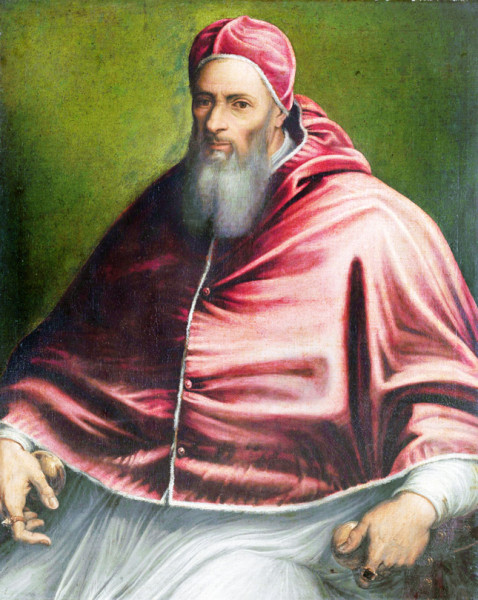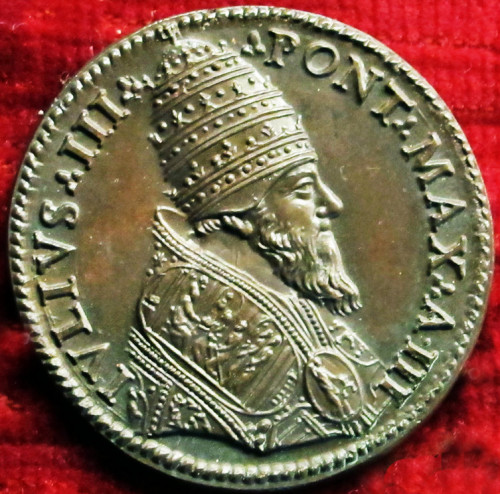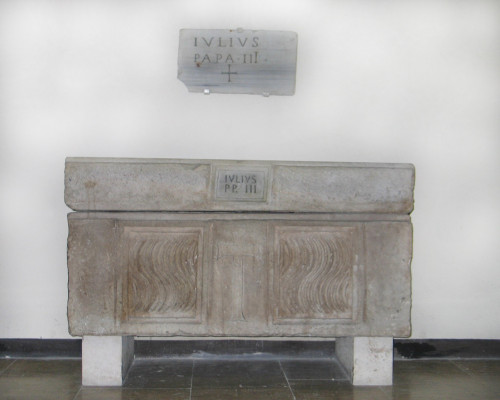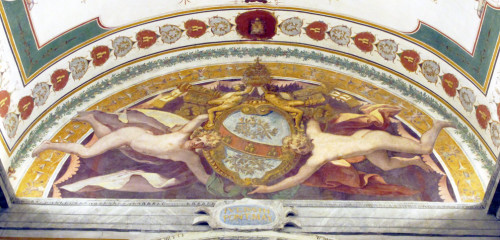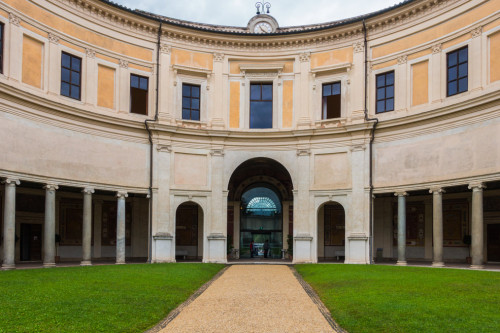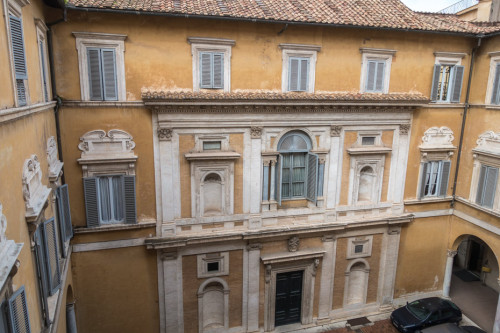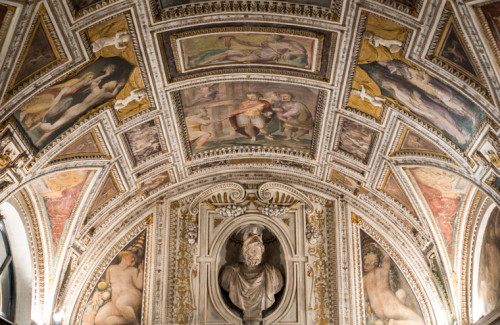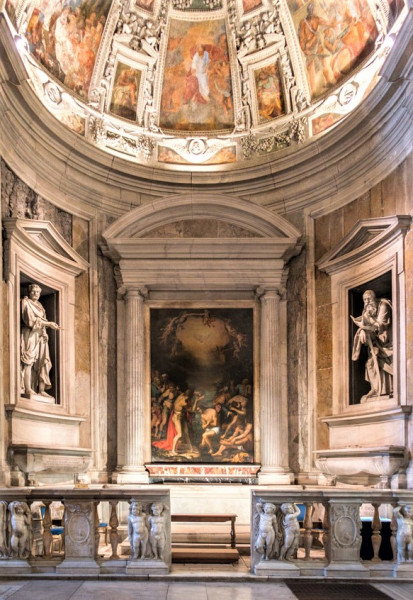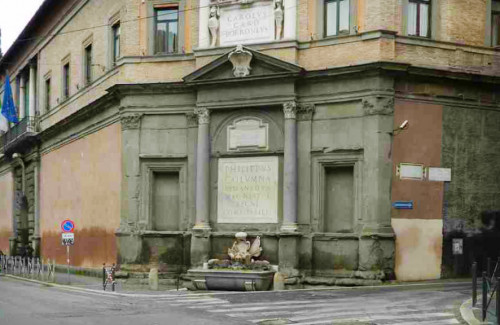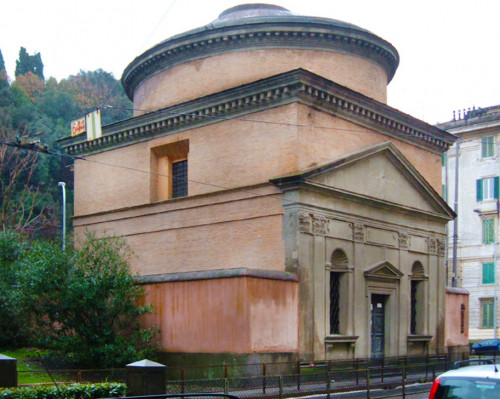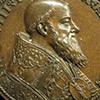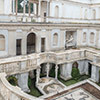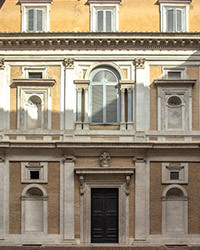He was not a significant bishop in Rome, and although we cannot accuse him of a lack of ambitions, these did not concern matters of the Church. He was one of the last popes of the Renaissance – fond of the pleasures of everyday life, the culture of antiquity, basing his rule on nepotism, and a man who valued art although for him it was above all a way to elevate his family (average at best) to the very top of the Roman black aristocracy – as quickly as possible and at any price.
He was not a significant bishop in Rome, and although we cannot accuse him of a lack of ambitions, these did not concern matters of the Church. He was one of the last popes of the Renaissance – fond of the pleasures of everyday life, the culture of antiquity, basing his rule on nepotism, and a man who valued art although for him it was above all a way to elevate his family (average at best) to the very top of the Roman black aristocracy – as quickly as possible and at any price.
The Conclave which elevated him to St. Peter’s throne certainly was not the work of the Holy Spirit. After the death of Pope Paul III (1549), the cardinals who gathered in Rome were to choose the next representative of Christ on Earth. This was no easy task, as neither of the two sides – the pro-French one and the pro-imperial one – was able to attain the appropriate amount of votes. Chaos was prevalent in the city, while the talks of the Conclave could not come to a close. Finally, in the third month, a compromise candidate was elected, one who put an end to the long-lasting stalemate. The chances of cardinal del Monte were not very optimistic and had it not been for the illness of another cardinal (the future Pope Marcellus II), he would probably not have been elected.
However, when this did come to pass, joy erupted on the streets of Rome – people were ecstatic at the fact that a Roman by birth had become a pope. As was customary many days were spent on partying and feasting and bulls were hunted on Campidoglio Square.
The new fifty-eight-year-old pope, who took the name of the great benefactor of the del Monte family – Julius II, had been until then a rather inconspicuous official in the Curia who dealt with civil and canon law. He came from a family of lawyers, while his studies (law and theology) as well as the protection of his uncle, Cardinal Antonio del Monte, allowed him to rapidly ascend the rungs of the Church career ladder, which culminated with the status of titular cardinal of the churches of San Vitale and Santa Prassede in Rome. Giovanni Maria Ciocchi was the representative of Pope Paul III at the Council of Trent. The only dark shadow cast upon him was the rumors spread about him concentrating on the young boy of unknown provenance, whom he felt a great affection for and with whom as a father would, as the ambassador of Venice claimed “he slept in one bed”. However, since these rumors did not stop Giovanni from being elected as pope, it seemed that they were greatly exaggerated or even completely made up.
After assuming the throne of St. Peter, Julius III quickly went to work. He initiated the reactivation of the Council of Trent, however, the arguments between the Habsburgs and the Valois slowed down its convening and later led to the suspension of the talks. The pope's attempts at mediation between the two conflicted rulers came to nothing. Disheartened with foreign policy, Julius III occupied himself with the current affairs of the State of the Church. He established the Collegium Germanicum in Rome, which was to constitute a strong propaganda branch of the Church, in which young priests, who would later work in Protestant Germany, were to be educated in the spirit of the Counterreformation.

A significant part of his five-year pontificate was devoted by Julius to his own family. Immediately after his coronation, he brought his relatives to Rome bestowing them with influential offices and titles. This aroused neither anger nor surprise. Nepotism was a universally accepted phenomenon while giving the money of the faithful to family members – something obvious. However, when the pope desired to elevate his favorite Innocenzo del Monte (in the meantime adopted by his brother), who was the object of rumors, to the rank of Cardinal the Curia expressed its indignation. Not so much by the fact that he was seen by many as the pope's lover or at least a son, but by the fact that he was born out of wedlock. Yet the Curia's pleas and threats came to naught. At a secret consistory, the pope made Innocenzo into a cardinal, later granting him numerous offices and appanages connected with the new status.
After providing his nepots with the appropriately profitable functions the pope started purchasing land in the city center with the idea of building a great residential complex (Palazzo di Firenze) as well as vineyards outside the city walls to build a magnificent summer residence (Villa Giulia) for himself. There was also a need for the del Monte family chapel, and all of this was to serve the purpose of establishing the power of the family, similar to that enjoyed by the Farnese family. Some of Julius’s plans came to fruition, however his rather short pontificate did not unfortunately allow him to realize all his ambitions. If we take into account the speed at which these structures were completed and their sheer magnitude the pope’s actions must be looked upon with respect. The pearl in the crown of all these projects was the Villa Giulia. Works on its construction proceeded at such a rapid pace, that the pope was able to spend a rather extensive amount of time on rest and relaxation of a decisively secular character, which is evidenced by the decorations (partially destroyed). And while such behavior was not seen as problematic earlier, in the time of confrontation between the Roman Catholic Church with the Protestants who wanted nothing more than to discredit the pope, it was at least seen as unreasonable. However, the pontiff who suffered from inflammation of the joints and gout loved spending time there, surrounded by pleasures and luxuries in the company of his closest advisors far from the eyes of his critics.

The pope’s plans also included an impressive family chapel, which was to be a testimony to the significance of the del Monte family. It was created in the Church of San Pietro in Montorio and is one of the most beautiful examples of Mannerist art in the Eternal City.
Julius III brought together such outstanding artists as Jacopo da Vignola, Giorgio Vasari, Bartolomeo Ammannati, and Daniele da Volterra. He entrusted them with the decoration of his own construction endeavors but (some) also participated in the decoration of the Apostolic Palace, the Castle of the Holy Angel, and the Belvedere on the Vatican.
Foundations of Julius III in Rome:
- Ciocchi del Monte Chapel in the Church San Pietro in Montorio, 1552
- Palace for his brother Baldovino (currently Palazzo di Firenze), taken over by the de Medici family, 1555
- Villa Giulia gifted to his brother Baldvino del Monte, 1553
- San Andrea (da Vignola) Chapel at via Flaminia (1553) built as a votive offering for the miraculous rescue of the pope during the Sacco di Roma, as a bishop, he was a prisoner of Emperor Charles V (he was liberated on the Feast of St. Andrew, 30 November) – a private chapel of the del Monte family
- Fontana Publica at via Flaminia
The pope died suddenly from gout. His body was laid to rest in a rather modest sarcophagus in the Vatican Grottoes. His family ambitions did not find proper continuation. Subsequent popes stripped the del Monte of the structures created by Julius III, while his favorite nepot Innocenzo del Monte became a veritable thorn in their side.


